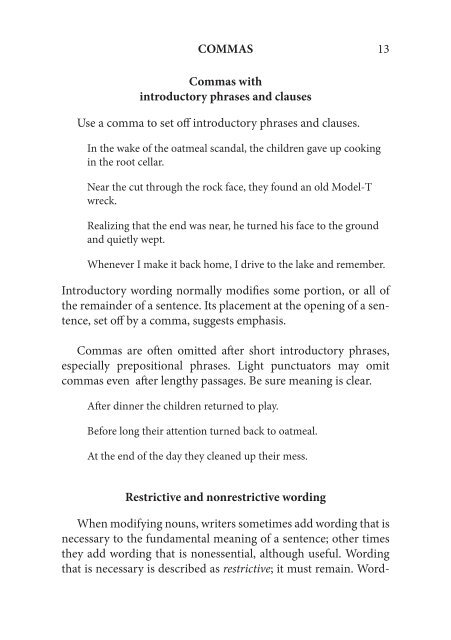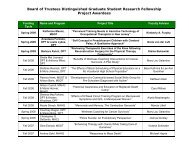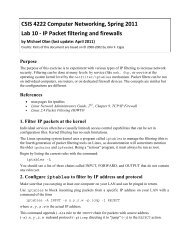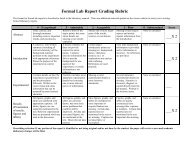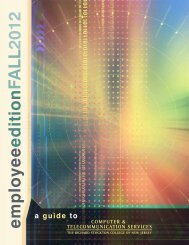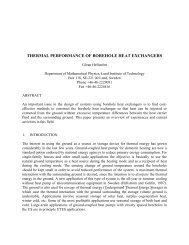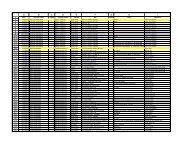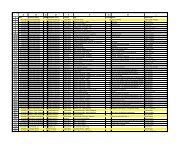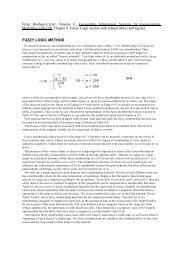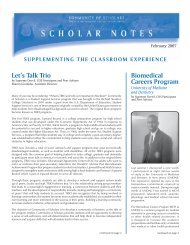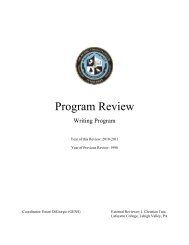Brief Guide to Punctuation - Stockton College
Brief Guide to Punctuation - Stockton College
Brief Guide to Punctuation - Stockton College
You also want an ePaper? Increase the reach of your titles
YUMPU automatically turns print PDFs into web optimized ePapers that Google loves.
COMMAS<br />
13<br />
Commas with<br />
introduc<strong>to</strong>ry phrases and clauses<br />
Use a comma <strong>to</strong> set off introduc<strong>to</strong>ry phrases and clauses.<br />
In the wake of the oatmeal scandal, the children gave up cooking<br />
in the root cellar.<br />
Near the cut through the rock face, they found an old Model-T<br />
wreck.<br />
Realizing that the end was near, he turned his face <strong>to</strong> the ground<br />
and quietly wept.<br />
Whenever I make it back home, I drive <strong>to</strong> the lake and remember.<br />
Introduc<strong>to</strong>ry wording normally modifies some portion, or all of<br />
the remainder of a sentence. Its placement at the opening of a sentence,<br />
set off by a comma, suggests emphasis.<br />
Commas are often omitted after short introduc<strong>to</strong>ry phrases,<br />
especially prepositional phrases. Light punctua<strong>to</strong>rs may omit<br />
commas even after lengthy passages. Be sure meaning is clear.<br />
After dinner the children returned <strong>to</strong> play.<br />
Before long their attention turned back <strong>to</strong> oatmeal.<br />
At the end of the day they cleaned up their mess.<br />
Restrictive and nonrestrictive wording<br />
When modifying nouns, writers sometimes add wording that is<br />
necessary <strong>to</strong> the fundamental meaning of a sentence; other times<br />
they add wording that is nonessential, although useful. Wording<br />
that is necessary is described as restrictive; it must remain. Word-


